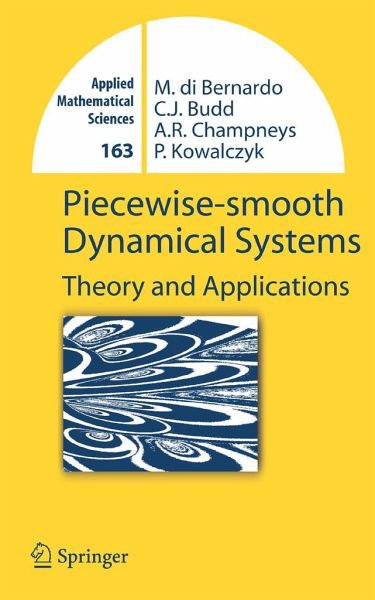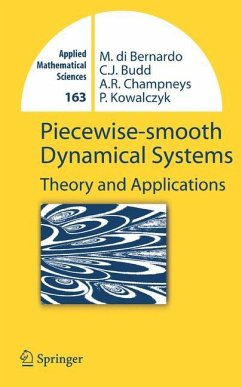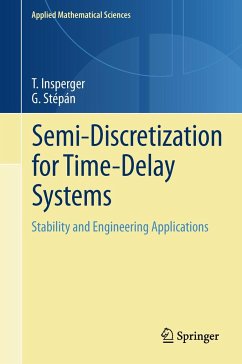
Piecewise-Smooth Dynamical Systems
Theory and Applications
Mitwirkender: Bernardo, Mario di; Champneys, Alan; Budd, Chris
Versandkostenfrei!
Versandfertig in 6-10 Tagen
121,99 €
inkl. MwSt.
Weitere Ausgaben:

PAYBACK Punkte
61 °P sammeln!
Traditional analysis of dynamical systems has restricted its attention to smooth problems, but it has become increasingly clear that there are distinctive phenomena unique to discontinuous systems that can be analyzed mathematically but which fall outside the usual methodology for smooth dynamical systems.The primary purpose of this book is to present a coherent framework for understanding the dynamics of piecewise-smooth and hybrid systems. An informal introduction asserts the ubiquity of such models with examples drawn from mechanics, electronics, control theory and physiology. The main thru...
Traditional analysis of dynamical systems has restricted its attention to smooth problems, but it has become increasingly clear that there are distinctive phenomena unique to discontinuous systems that can be analyzed mathematically but which fall outside the usual methodology for smooth dynamical systems.
The primary purpose of this book is to present a coherent framework for understanding the dynamics of piecewise-smooth and hybrid systems. An informal introduction asserts the ubiquity of such models with examples drawn from mechanics, electronics, control theory and physiology. The main thrust is to classify complex behavior via bifurcation theory in a systematic yet applicable way. The key concept is that of a discontinuity-induced bifurcation, which generalizes diverse phenomena such as grazing, border-collision, sliding, chattering and the period-adding route to chaos. The results are presented in an informal style and illustrated with copious examples, both theoretical and experimental.
Aimed at a wide audience of applied mathematicians, engineers and scientists at the early postgraduate level, the book assumes only the standard background of basic calculus and linear algebra for most of the presentation and will be an indispensable resource for students and researchers. The inclusion of a comprehensive bibliography and many open questions will also serve as a stimulus for future research.
The primary purpose of this book is to present a coherent framework for understanding the dynamics of piecewise-smooth and hybrid systems. An informal introduction asserts the ubiquity of such models with examples drawn from mechanics, electronics, control theory and physiology. The main thrust is to classify complex behavior via bifurcation theory in a systematic yet applicable way. The key concept is that of a discontinuity-induced bifurcation, which generalizes diverse phenomena such as grazing, border-collision, sliding, chattering and the period-adding route to chaos. The results are presented in an informal style and illustrated with copious examples, both theoretical and experimental.
Aimed at a wide audience of applied mathematicians, engineers and scientists at the early postgraduate level, the book assumes only the standard background of basic calculus and linear algebra for most of the presentation and will be an indispensable resource for students and researchers. The inclusion of a comprehensive bibliography and many open questions will also serve as a stimulus for future research.














